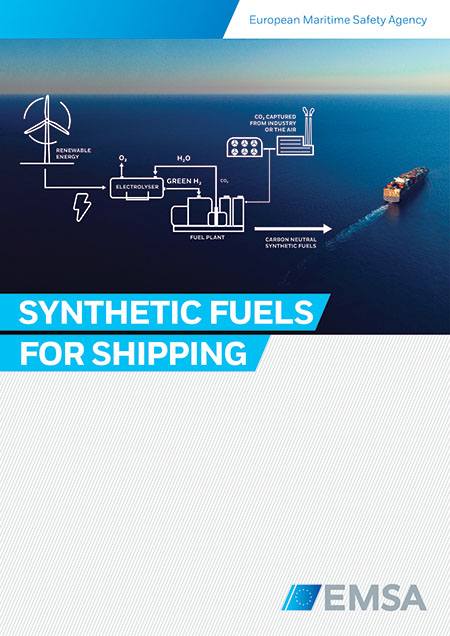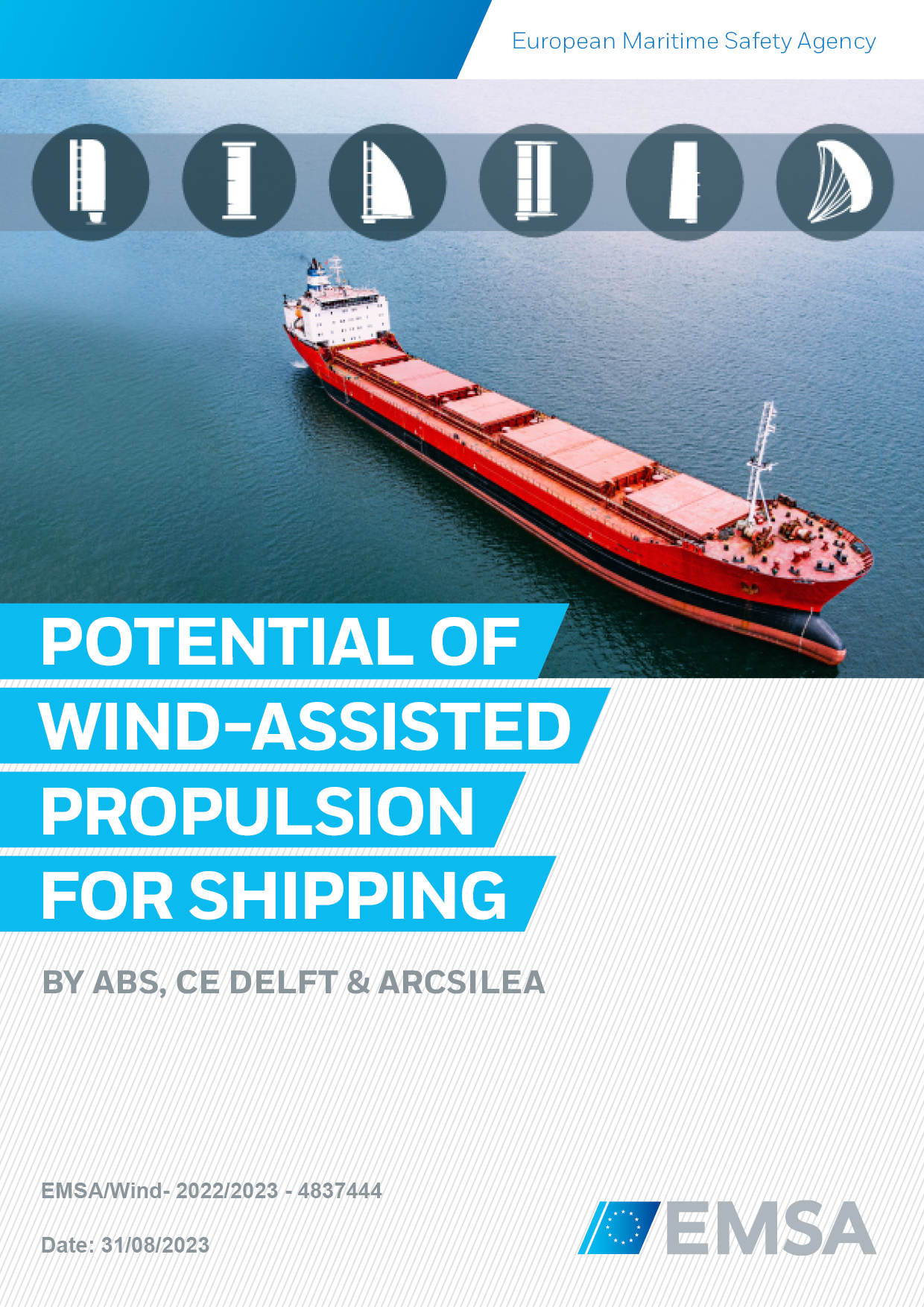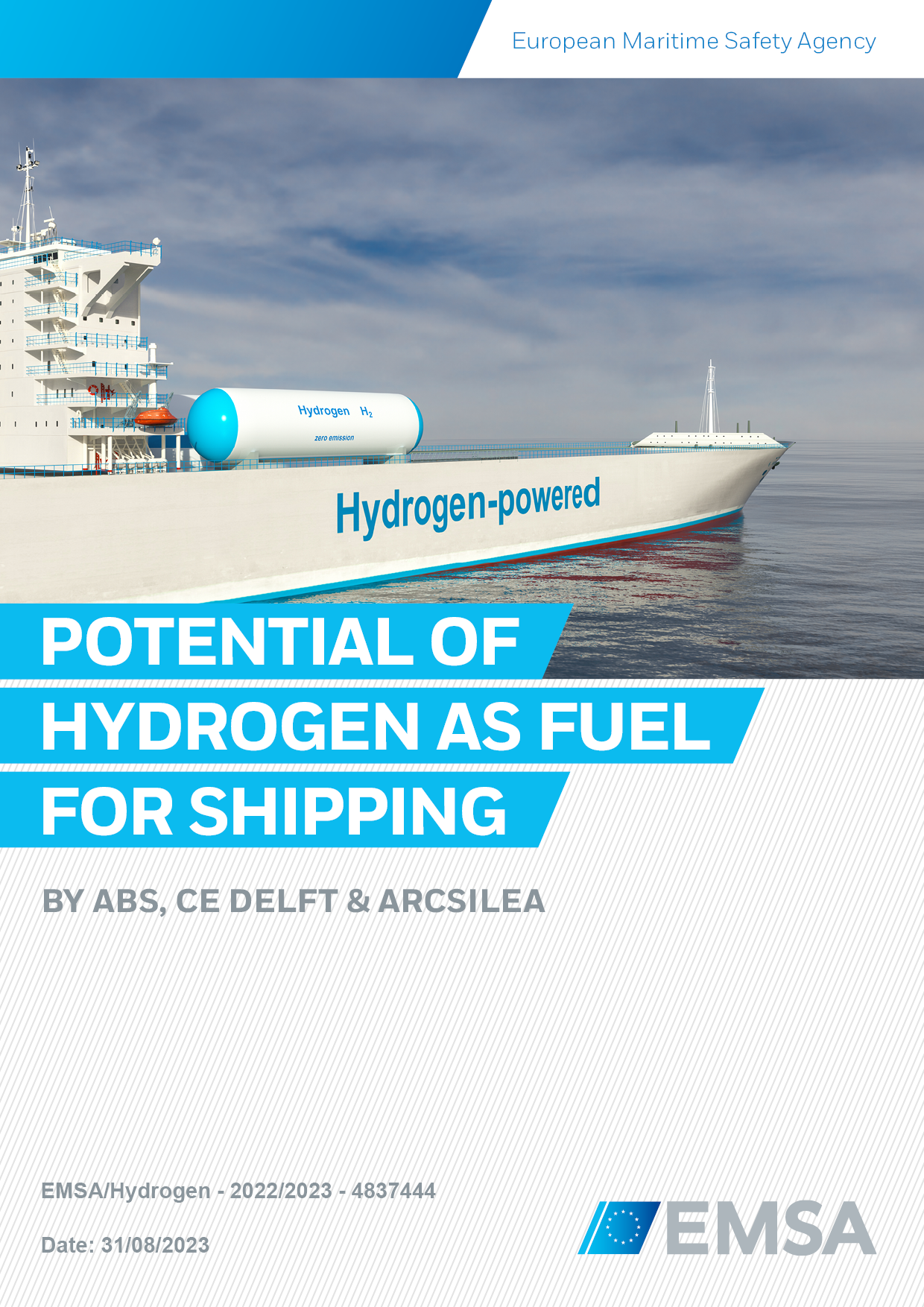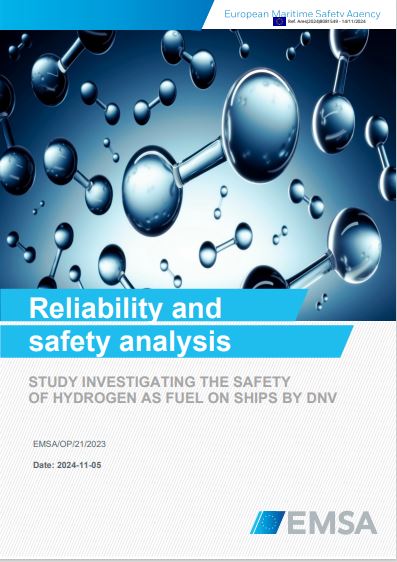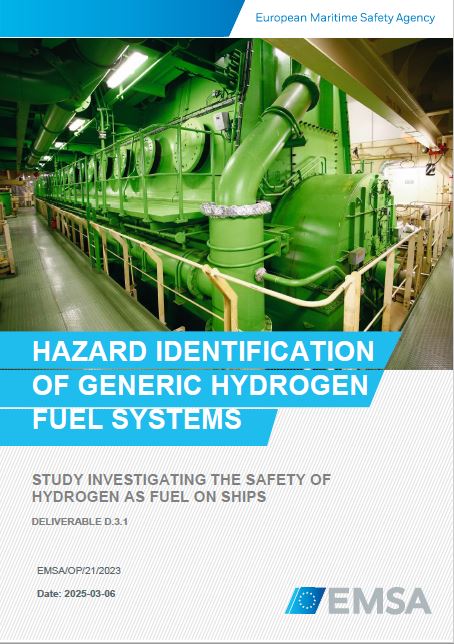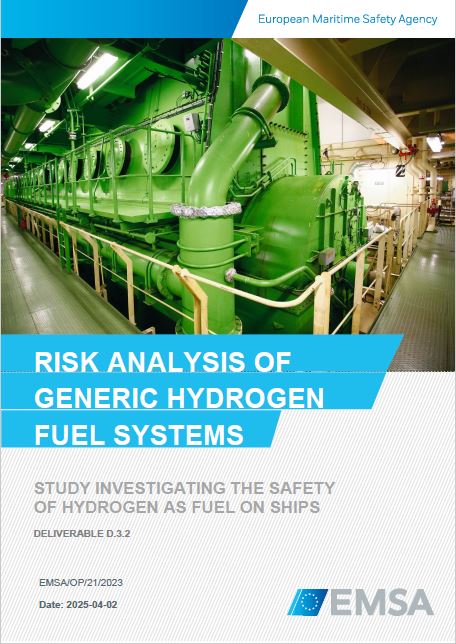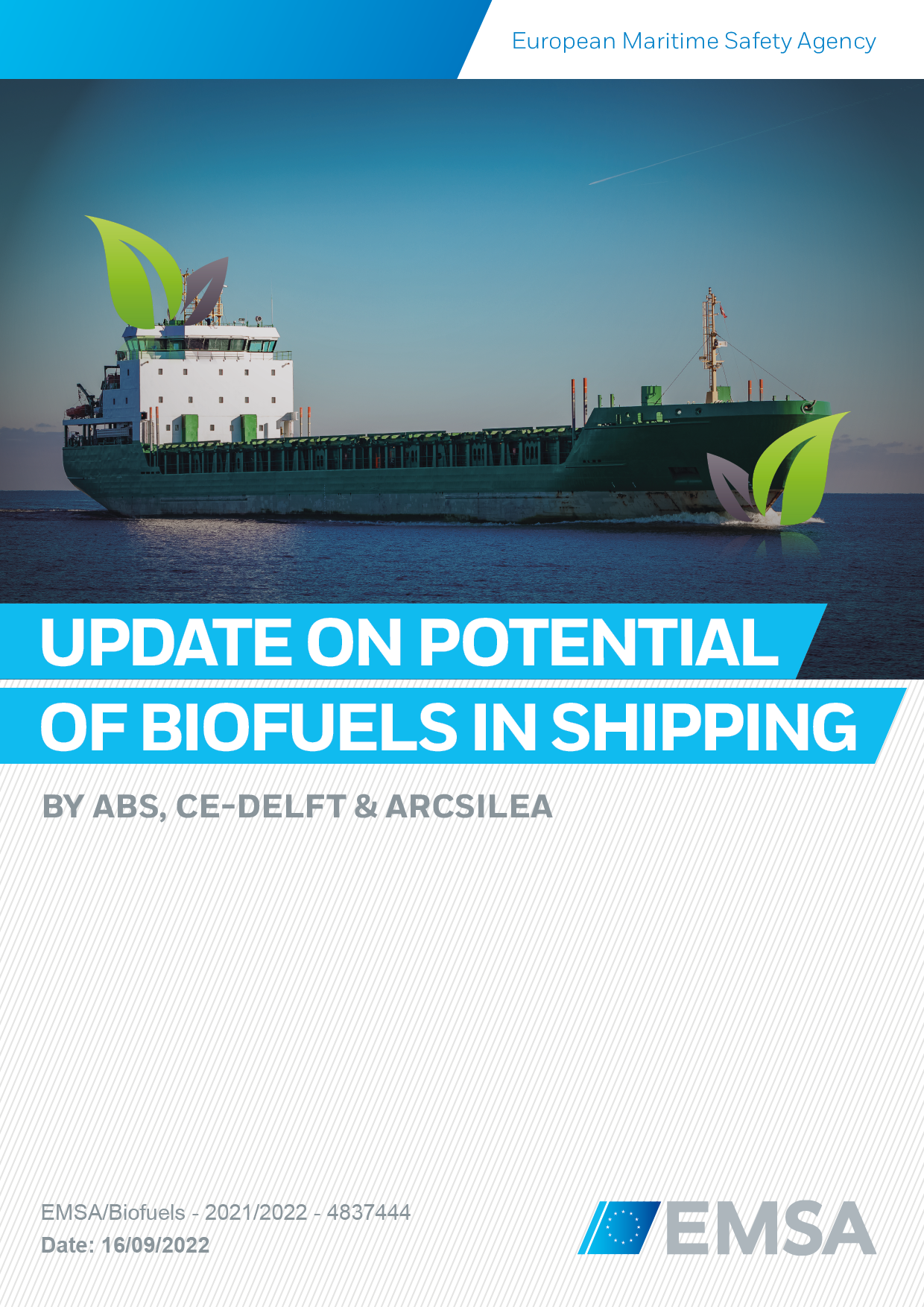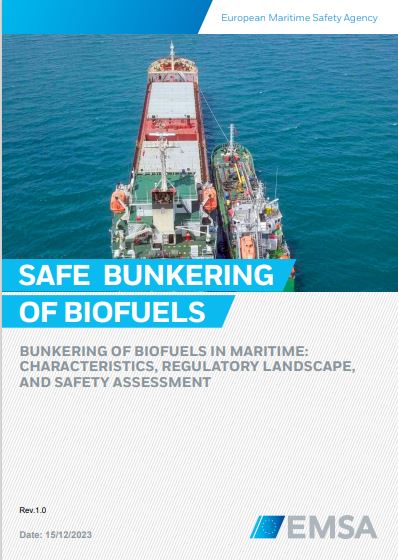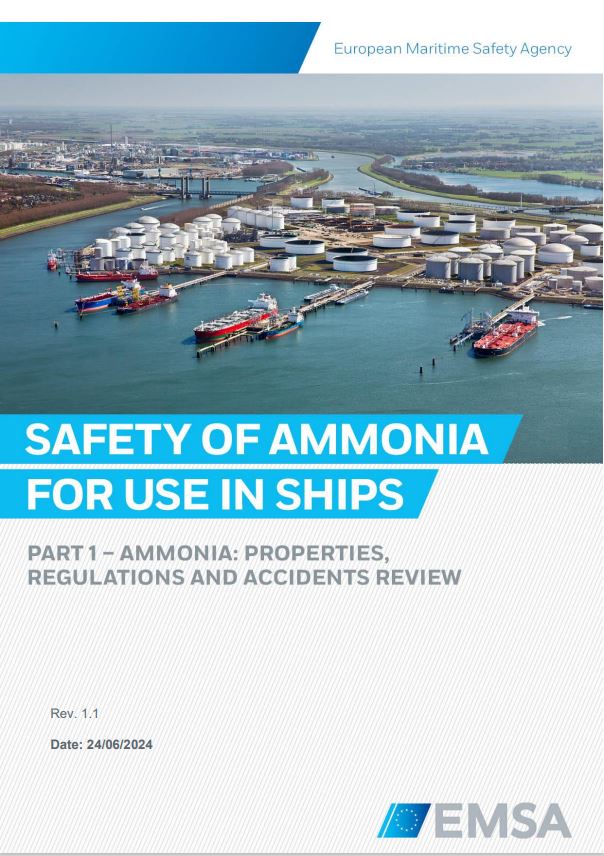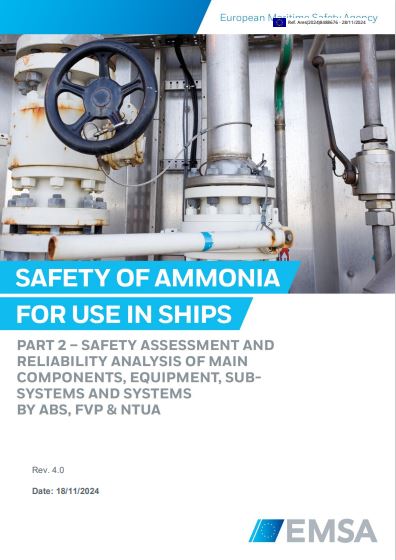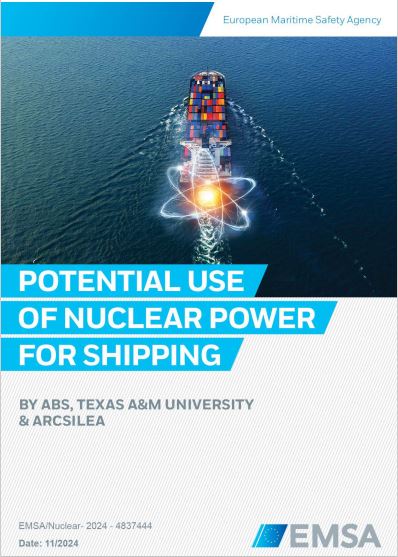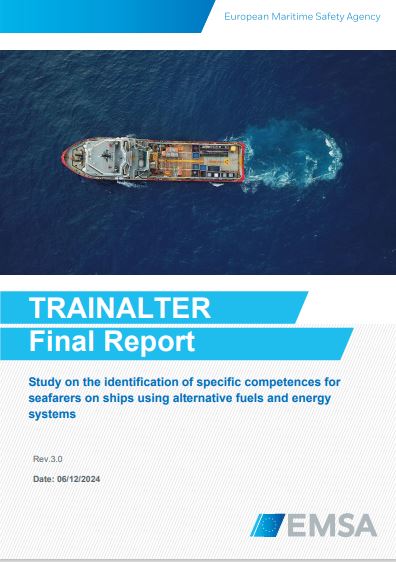Alternative Sources of Power

Under the European Green Deal, the EU has pledged to become climate neutral by 2050, with an intermediate goal of a 55% reduction of greenhouse emissions by 2030. Maritime transport, which has traditionally relied on the use of conventional fossil fuels, is preparing for a transformation to meet EU and international climate targets.
To this end, and to support the European Commission, national administrations, and industry in the ongoing decarbonisation of the maritime sector, particularly in the context of the FuelEU Maritime initiative, EMSA has produced a series of reports, studies, and guidance on alternative fuels and sources of power.
Synthetic - Wind – Hydrogen – Safety Guidance on Batteries – Biofuels – Ammonia – Shore Side Electricity - Nuclear
Synthetic fuels
Among the broad spectrum of technology and fuel solution pathways presently available to ship designers, builders, owners, and operators, synthetic fuels or, more specifically, renewable e-fuels, offer medium and long-term alternatives that can enter the market relatively quickly. This new report analyses the potential of e-diesel, e-methane, and e-methanol across a range of areas and indicators, including production, sustainability, availability, techno-economic aspects, and the regulatory landscape.
|
Synthetic fuels or, more specifically, renewable e-fuels (to be referred as e-fuels in this study) – offer medium and long-term alternatives that can enter the market relatively quickly. On a Well-to-Tank basis, they also offer the potential to reduce the carbon output of their fleets to zero, or very close to it. Among the synthetic fuels, e-ammonia, e-hydrogen, e-diesel, e-methane and e-methanol are expected to see the largest uptake by the shipping industry. The first two have been extensively analysed in previous EMSA studies on biofuels and hydrogen, so this study focuses on the remaining three, namely e-diesel, e-methane and e-methanol. |
Wind
Wind-assisted propulsion systems (WAPSs) are seen as a technology that could reduce the fuel consumption from ships and consequently lower their greenhouse gas (GHG) and other emissions. There are several types of WAPSs that have been developed for the maritime industry; still others remain in development. These systems differ not only in terms of maturity, costs involved and fuel savings potential, but also in terms of their suitability for specific ship types.
Hydrogen
The maritime industry faces substantive challenges, many of which are driven by increasingly stricter air emissions and climate legislation as its practitioners navigate a course towards decarbonisation. Among the broad spectrum of technologies and fuel solutions being considered, hydrogen that is produced with renewable energy (green hydrogen) has been identified as a fuel that could offer a ‘near-zero’ carbon solution on a well-to-wake basis.
|
Mapping safety risks for hydrogen-fuelled ships. Study investigating the safety of hydrogen as fuel on ships EMSA has contracted a study to DNV for investigating the safety of hydrogen as fuel on ships – EMSA OP/21/2023. Building on the most recent results of the IMO regulatory efforts, the expected outcome of the study is a Guidance document for ships using hydrogen as fuel, complementing to existing regulations, developed after carrying out a structured set of safety assessments and reliability analysis of hydrogen systems’, equipment and components. The Guidance should assist the industry and regulators towards a safe and harmonised deployments of the relevant technology using this fuel. |
Guidance on the Safety of on-board Battery Energy Storage Systems (BESS)
The EMSA Guidance on the Safety of Battery Energy Storage Systems (BESS) On-board Ships aims at supporting maritime administrations and the industry by promoting a uniform implementation of the essential safety requirements for batteries on-board of ships. The development of the Guidance was supported by an extensive Group of Experts that brought essential knowledge on the requirements of classification societies, industry standards and available research.
Biofuels
Biofuels potentially offer medium and long-term marine fuel alternatives that can enter the market relatively quickly. They also offer the potential, if sustainability criteria are met, to reduce carbon output compared to traditional carbon-based fossil fuels.
The ‘drop-in’ characteristics of biofuels, that is the possibility to replace conventional petroleum-refined hydrocarbons without substantial modifications (and in some cases, without any modification) to engines, fuel tanks, pumps, or supply systems, may offer an immediate and cost-effective solution, for the existing fleet.
EMSA’s Update on Potential of Biofuels for Shipping report updates a previous study on the use of ethyl and methyl alcohol as alternative fuels in shipping. It looks at the full range of biofuels, both liquid and gaseous, in terms of current production capacity, storage-and-distribution infrastructure, and power-generation technologies. It also includes techno-economic analyses and risk-based case studies.
|
Following on from the Update on the Potential of Biofuels in Shipping, which preliminarily identified as a gap in standardisation for safety the lack of dedicated marine bunkering guidance for biofuels, EMSA contracted the study EMSA OP/11/2023 to DNV to address such gap. The study builds on expert knowledge of the physical-chemical characteristics of selected biofuels (bio-methanol, FT-diesel, DME, HVO and FAME) and bunkering practices to identify possible risks and safeguards. The main outcome of this study is a Guidance document, including checklists for different bunkering phases and configurations. |
Ammonia
Anhydrous ammonia (NH3) has been identified as a potential long-term fuel that could enter the market relatively quickly and offer a zero, or a near-zero, carbon solution (on a tank-to-wake basis and in some cases on a well-to-wake basis) irrespective of the origin of the fuel.
While there is little recent marine experience with using ammonia as a fuel – and some of the key machinery technologies (such as engines) are under development – extensive land-based experience with the production and use of ammonia for the petrochemical and fertiliser industries forms a sound basis for increasing its use as a marine fuel. However, the toxicity challenges and related risks are significant and, while manageable, they will add complexity to ship designs (compared to those for conventional and other low-flashpoint fuels and gases) and will potentially limit the ships for which it is a suitable fuel.
EMSA’s Potential of Ammonia as Fuel in Shipping report identifies the key challenges for adopting ammonia as fuel. It has also identified a number of advantages that ammonia would have over other low-flashpoint fuels or gases, technology and regulatory gaps that would prevent its immediate application, and some incentives that would encourage its adoption.
|
Study investigating the safety of ammonia as fuel on ships A study for investigating the safety of ammonia as fuel on ships – EMSA/OP/6/2023 - is contracted to ABS, Fundación Valenciaport and NTUA. In a similar way as for hydrogen, building on the most recent results of the IMO regulatory efforts, the expected outcome of the study is a Guidance document for ships using ammonia as fuel, complementing to existing regulations, developed after carrying out a structured set of safety assessments and reliability analysis of ammonia systems’, equipment and components. The Guidance should assist the industry and regulators towards a safe and harmonised deployments of the relevant technology using this fuel.
|
Shore-side electricity
The use of Onshore Power Supply (OPS) also commonly referred to as Alternate Marine Power or Cold Ironing, has already gained decades of experience, particularly with low-voltage supply. Other options for electrification in the ship-shore interface include battery charging, battery swapping, power banking and microgeneration.
Together with OPS, all these present technical and safety challenges to the port authorities. Accordingly, EMSA prepared this Guidance on shore-side electricity addressed to port authorities and administrations.
The EMSA Guidance on Shore-Side Electricity is intended to assist in the planning and development of SSE options, starting with project decision-making and development of infrastructure elements, definition of responsibility frameworks and construction of control measures to assist in operation.
|
The Guidance is divided into two parts: equipment and technology; and planning, operations, and safety. Both parts are presented together with a SSE/OPS Quick-Reference Guide, which provides a step-by-step technical guide for how to plan for, install, and use Shore-Side Electricity (SSE), with a focus on Onshore Power Supply (OPS).
|
Nuclear
Until now, nuclear power has been used for ships mainly for military purposes and for the propulsion of icebreakers in the Arctic. However, at European level, nuclear energy has been identified as a sustainable source of energy able to assist in meeting the zero-emission goal of the EU and therefore is eligible for green sustainable financing.
Other Related Publications
EMSA Guidance on LNG Bunkering to port authorities and administrations
The guidance was prepared in close cooperation with the European Commission (DG MOVE), member states and industry within the context of the European Sustainable Shipping Forum. It aims to support port authorities and administrations backing the use of LNG as a ship fuel, as part of a joint effort to increase safety and sustainability [read more]
EMSA Study on the use of Fuel Cells in Shipping
The EMSA Study on the use of Fuel Cells in Shipping includes a technology and regulatory review, identifying gaps to be further explored, the selection of the most promising Fuel Cell technologies for shipping and, finally, a generic Safety Assessment where the selected technologies are evaluated according to Risk & Safety aspects in generic ship design applications [read more].
EMSA Study on Electrical Energy Storage for Ships
The report provides a technical study on the use of Electrical Energy Storage in shipping that evaluates the potential and constraints of batteries for energy storage in maritime transport applications. In addition, the study provides a detailed description of projects where pilot applications of marine battery systems have been deployed, both for Electric and Hybrid-Electric applications, with a focus on EU co-funded projects such as the E-Ferry [read more].
Study on the use of ethyl and methyl alcohol as alternative fuels in shipping
Methyl and ethyl alcohol fuels, also referred to as methanol and ethanol, are good potential alternatives for reducing both the emissions and carbon footprint of ship operations. As they are sulphur-free, use of methanol and ethanol fuels would ensure compliance with the European Commission Sulphur Directive. EMSA commissioned this study, published in 2016, to gain more information about the benefits and challenges associated with these fuels and to evaluate their potential for the shipping industry [read more].

